Image Above: Portrait by Adam Harvey
STEVE MILLER: This issue of Musee is about controversy and you are focusing your artistic efforts on an important global discussion but, before we go there, you started out as a photographer. What led you to first think about photography?
ADAM HARVEY: I was motivated early on to be a photographer by the world I saw through magazine photography in the mid 1990s, like GEAR and National Geographic, but was reluctant to act on it. Things changed in 2001. I saw and was deeply moved by Sebastio Salgado's Migrations exhibition at ICP, I obtained a part-time position as a photojournalist at my school's newspaper which eventually led me to change my major, and then 9/11 happened. From that year on I've been closely following photography and its changing role in a landscape of mass surveillance.
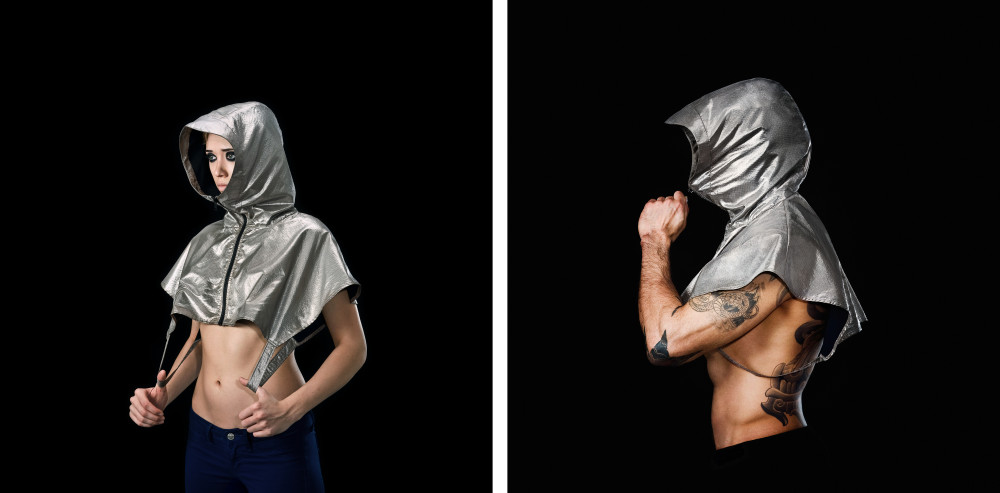 ©Adam Harvey, Designed by Adam Harvey and Johanna Bloomfield, (Left: ’Anti-Drone' Hoodie, 2013; Right:’Anti-Drone' Hoodie, 2013).
©Adam Harvey, Designed by Adam Harvey and Johanna Bloomfield, (Left: ’Anti-Drone' Hoodie, 2013; Right:’Anti-Drone' Hoodie, 2013).
.
SM: One of the biggest controversies of our era was highlighted by the work of Edward Snowden revealing the massive extent of the data collected by our government. As a photography magazine, Musee is primarily about photographers recording the world through a lens and getting those images out into the world. Traditional photography is an act of seeing, and the way we look. Surveillance is about being seen to record our look.
It strikes me that your enterprise as an artist is to do the complete opposite, to avoid being seen. Would you like to comment on that?
AH: Although my work takes an antagonistic approach to surveillance it's really about creating new ways of appearing. I consider how both people and machines see and explore how the former can control visibility in both perceptual states. For example, my project CV Dazzle is about existing in a recognizable state to people, but in an imperceptible state to machines. The idea is that human-scale observation is tolerable, but automated mass surveillance is not. The project's designs exploit a vulnerability in some face detection systems that relies on symmetry and the visibility of the nose bridge area to locate a face. By altering the contrast and gradients of these key facial features, a computer no longer sees a face. Yet in human-perception the person is still identifiable.
I take a similar approach with Stealth Wear, using metal-plated fabrics to cloak the wearer's thermal signature. The garments look normal in the visible light spectrum, but in the thermal spectrum the metal-plated fabric hides the wearer's radiated thermal energy. In both cases, the user appears more visible in one spectrum and less visible in the other. Appearance is relative to the spectrum being observed.
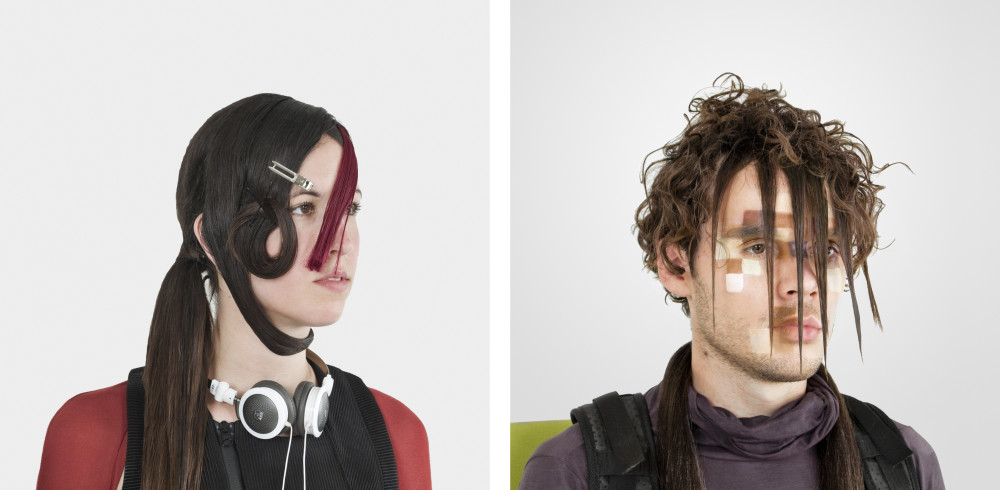 ©Adam Harvey, Designed by Adam Harvey and Johanna Bloomfield, (Left: Look 4, 2010; Right:Look 3, 2010).
©Adam Harvey, Designed by Adam Harvey and Johanna Bloomfield, (Left: Look 4, 2010; Right:Look 3, 2010).
SM: How did you develop your point of view?
AH: A lot of my opinions formed while working as an event and party photographer during my first few years in New York City. In the beginning, around 2004-05, everyone seemed to love being photographed and having their photo posted online. But within the next two years, more people had cameras and people become their own photographer, in control of their own image. I felt like I was doing some people a disservice by taking their photograph, especially if I posted it online. So I began looking for other ways to creatively engage with photography, by subverting it. The response to this approach was overwhelmingly positive. For all the technological development that has advanced the art of photography, very little has been done to advance our ability to hide or control visibility. The result is that we are more exposed than ever. We have powerful, cheap and ubiquitous tools to see over great distances, in low light, in multiple spectrums, and with tiny or even hidden devices. For all these advancements in augmented seeing, we seem to forgotten about the art of not being seen, of controlling visibility. This creates a power asymmetry between the photographer and the subject. The projects I'm working are about restoring a balance by empowering the subject.
SM: When I heard you speak at NEW INC on ways to avoid a digital footprint, it struck me about how much work it takes to avoid detection. Would you talk a little about the techniques you use. For example, Tor.
AH: In the past year, I've quit most Google services and stopped using Facebook. I've upgraded my browser with extensions like Disconnect, Privacy Badger and Ghostery. Whenever possible I use iMessages or Signal to communicate with friends instead of email. I always use a VPN to hide my Internet traffic and IP address. I use Tor occasionally, when more security is needed. I also try to pay in cash whenever possible to avoid credit card companies form selling my purchase data. Depending on who you work for, these tactics are considered either suspect or savvy. I would not recommend this digital detox approach to everyone. It's expensive and time consuming, but also very educational. To share some of what I've learned and help others improve their privacy, I run a bi-monthly event in NYC called Privacy Happy Hour, which is a hands-on approach to learning, installing, and celebrating privacy enhancing technology.
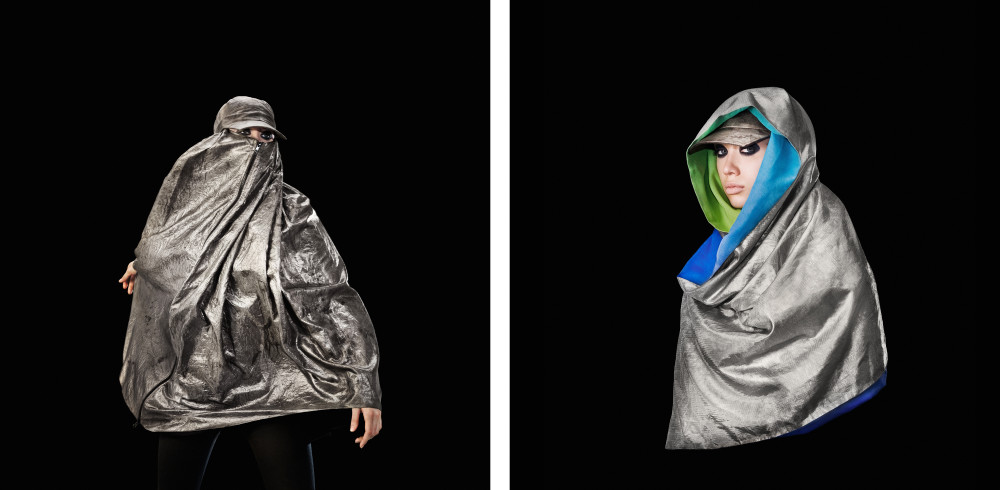 ©Adam Harvey, Designed by Adam Harvey and Johanna Bloomfield, (Left: ‘Anti-Drone' Burqa, 2013; Right: ’Anti-Drone' Hijab, 2013).
©Adam Harvey, Designed by Adam Harvey and Johanna Bloomfield, (Left: ‘Anti-Drone' Burqa, 2013; Right: ’Anti-Drone' Hijab, 2013).
SM: Do you ever consider that the effort you make to reduce your footprint makes you look irregular and more obvious and thus, more invisible?
AH: I've already crossed that threshold and now fully embrace that I have a red flag somewhere. It used to bother me more.
SM: One of the things you showed in your NY Times article from 2013 was the idea and images of a new concept of fashion to avoid detection. While the visual concepts are artistically fascinating, technology develops so quickly. Two years later, are any of these visual camouflage strategies still relevant or have you had to invent new ways to beat new tracking systems and their algorithms?
AH: The difficulty of developing camouflage against computer vision is that it has to continuously adapt to new detection algorithms. The image for the New York Times commission uses a different strategy than the previous four looks. Earlier, it was possible to use blocky makeup to obscure large parts of the face. This worked well against OpenCV's haarcascade detectors, but not as well against new detection algorithms that use other approaches like local binary patterns or neural networks. I hope to release an updated technique at some point this year that targets these newer approaches. However, many commercial face detection applications do still use the haarcascade method and the original CV Dazzle style is still relevant in some cases.
SM: What are you developing to keep up with the advancing speed of surveillance? How is the going the race between artist and computer?
AH: Right now my big concern is how Google and Facebook are amassing petabytes of information from their users and leveraging it to build artificial intelligence. This has a dark potential to combine the intelligence and insight of every Google or Facebook user into proprietary commercial technology that could be massively manipulative.
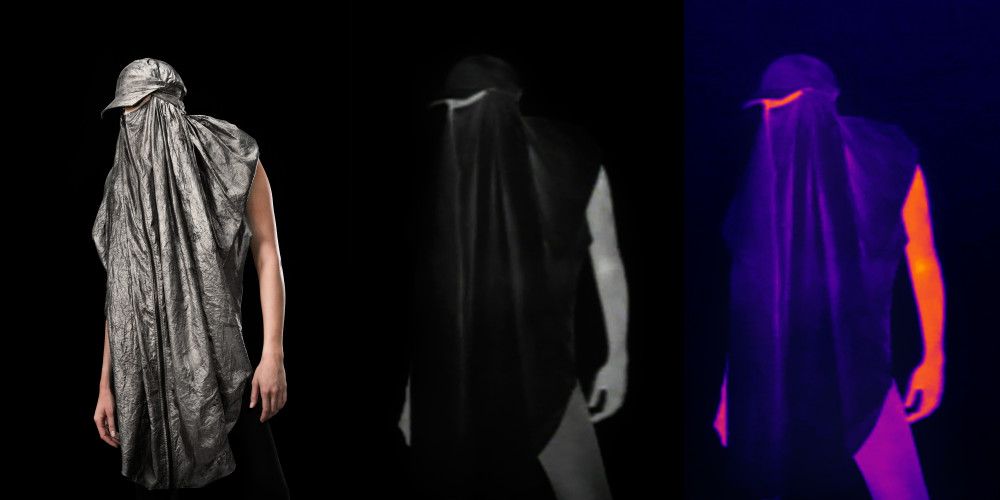 ©Adam Harvey, Designed by Adam Harvey and Johanna Bloomfield, ‘Anti-Drone' Burqa, 2013.
©Adam Harvey, Designed by Adam Harvey and Johanna Bloomfield, ‘Anti-Drone' Burqa, 2013.
SM: You and I know a world (or at least I do) before mass surveillance. It's impossible to turn back the clock. There is a new world reality. One aspect of this was described in the Ideas City program sponsored by the New Museum in May. "Everything we do, from messaging our friends to streaming music to using public transportation, generates information. 90 percent of the data in the world today has been created in the last two years alone, and its sheer volume means that a vast proportion of our lives exists as an invisible online record of our identities, interests, and affiliations.” Pre-Patriot act 2001 privacy no longer exists. What can you say to a person born after 2001 who grew up in our Brave New World? Is there even a definition of privacy, a word that can only reference the past?
AH: There are at least two ways of defining privacy. The first, from the Cypherpunk manifesto states that privacy is the power to selectively reveal oneself to the world. The second, by Dr. Helen Nissenbaum, states that privacy is about the appropriate flow of information about people. I like both views and fall somewhere in the middle, willing to participate in a data-driven society but unwilling to let others decide in secret what is considered appropriate. The definition of privacy is always a balance between the needs of society of the needs of an individual.
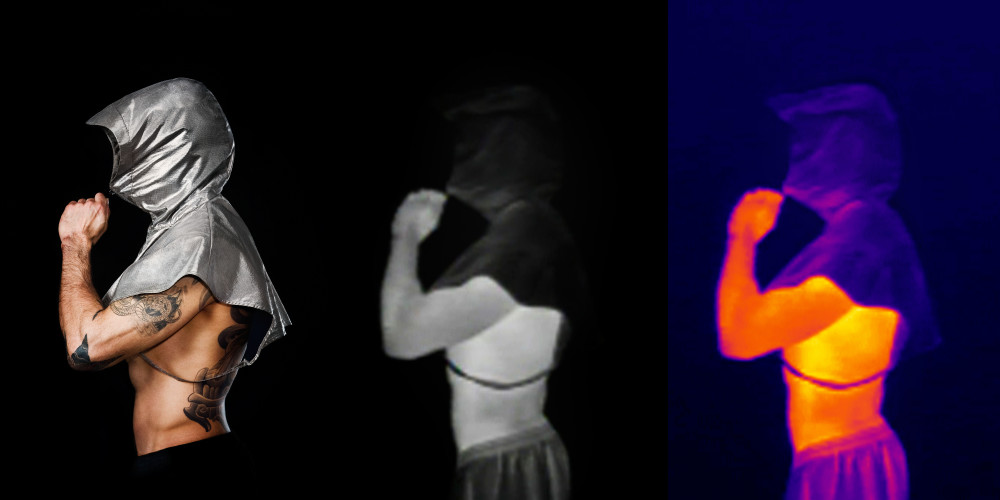 ©Adam Harvey, Designed by Adam Harvey and Johanna Bloomfield, ’Anti-Drone' Hoodie, 2013
©Adam Harvey, Designed by Adam Harvey and Johanna Bloomfield, ’Anti-Drone' Hoodie, 2013
SM: Are there aspects of your work that can reference days before 9/11 and is there any possibility of privacy in our mega data future?
AH: The key to establishing privacy in the future is establishing transparency now in how data is collected and used. If we let the Googles and NSAs of the world define privacy, it will not be in our favor. Citizens, and especially artists, should play just as aggressively as companies and spy agencies in the struggle for privacy.


